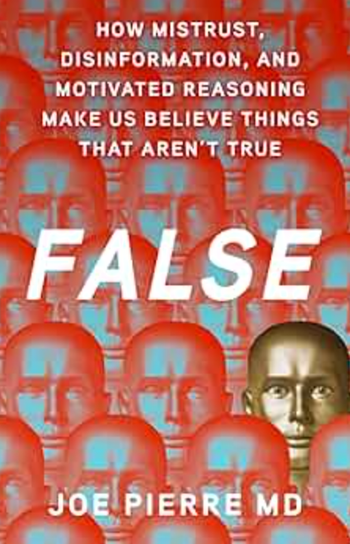
- Psychiatric Times Vol 25 No 12
- Volume 25
- Issue 12
In the Valley of Elah
In the Valley of Elah is an improvised explosive device that writer-director Paul Haggis has set to go off in the hearts and minds of Americans who still support the war in Iraq. Haggis, who earned an Oscar (Best Picture and Screenplay) for Crash, has aimed his second film at the hardworking, churchgoing, flag-flying, decent Americans who cannot imagine that the country they love would engage in an unjust war.
In the Valley of Elah is an improvised explosive device that writer-director Paul Haggis has set to go off in the hearts and minds of Americans who still support the war in Iraq. Haggis, who earned an Oscar (Best Picture and Screenplay) for Crash, has aimed his second film at the hardworking, churchgoing, flag-flying, decent Americans who cannot imagine that the country they love would engage in an unjust war. These persons support our troops, would die for their country, and are willing to have their own chidren make that sacrifice in Iraq as well.
Haggis’s protagonist in In the Valley of Elah is such a person. Tommy Lee Jones (nominated for Best Leading Actor for his portrayal) plays Hank Deerfield, a Vietnam veteran who has never lost faith in his country. He believes in military service and the martial discipline that has shaped his character and way of life. He is a man of Christian virtues who every day raises the American flag-the emblem of his belief that the United States is the greatest country in the world. Still, Hank is fiercely independent, a small-town man who is self-sufficient to a fault; he has run a gravel service for 30 years and trusts no one else to repair his trucks. His 2 sons look up to their father and follow him into the military. When the movie opens, one has died in a helicopter crash during training; the other is serving in Iraq.
Haggis took the title of his film from the battlefield in the First Book of Samuel, where the heroic David slays the giant Goliath-a story of the triumph of good over evil. But Haggis’s story is not about good prevailing. Rather, it is an account of the corruption of the souls and minds of young soldiers that will shake their parents’ faith in the war in Iraq and in the United States itself. For those parents, the Sunday school understanding of David and Goliath validates all their deepest convictions; however, Haggis’s film tries to force a different understanding on them.
Haggis, apparently worried that his film would be accused of crossing the line from antiwar to against our soldiers, sent a publicity letter via the Internet with this disingenuous explanation of his reading of the story of David: The Bible doesn’t tell us “how many boys the king sent into the valley before [David]. How many stories of brave young men were never told?” Haggis wants audiences to believe that his film digests those many stories of brave young men into an “acorn.” And, for whatever reason, he hides this acorn in a murder mystery.
“Million Dollar” reprise
The movie traces much the same moral and psychological journey as Clint Eastwood’s portrayal of Frankie Dunn in Haggis’s screenplay for Million Dollar Baby. In that movie, Frankie is another version of the decent American-a God-fearing Catholic, a boxing manager and trainer, and an autodidact whose moral fastidiousness has limited his worldly success. We follow him as he overcomes his prejudice against women in boxing and then as he renounces his church’s teachings to give a lethal injection to the woman he trained and has come to love as a daughter. She was permanently paralyzed in her championship bout and now desperately wants to die. Haggis suggests that only by rejecting his faith in the church’s teachings could the admirable Frankie do the right thing.
Haggis’s screenplay was a great success-a perfect vehicle for Eastwood and a box office Hollywood movie with a controversial ending that gave people something to talk about. In the Valley of Elah is designed to do the same: it takes Hank Deerfield on a similar type of moral adventure. Hank is awakened one morning by a phone call informing him that his son is missing-not in Iraq, where he thought he was still serving, but from the Army base to which his unit had just returned. His son is AWOL but Hank refuses to believe it. He gets into his pickup truck, says goodbye to his long-suffering wife (played by Susan Sarandon), and sets off to the Army base to investigate for himself.
It turns out that Hank was a noncommissioned officer in the military police and therefore knows how an investigation should be conducted. He quickly realizes that he is not getting the whole truth and that the Army is more concerned with its image than with his son’s fate. He begins his own investigation, talking to his son’s friends and appropriating his cell phone, along with the video clips-taken in Iraq-that were stored there. The images have been compromised, but he finds someone who will painstakingly restore them. Over the next few days, he views portions of the restored video; they are bewildering and chaotic images that he and the audience must understand to solve the mystery.
Hank’s search turns into a homicide investigation when his son’s burned body parts are found in a field near the base. The Army police are quick to conclude that he had become a drug addict in Iraq and was killed in a drug deal that had gone bad. They become even more adamant about excluding Hank from the investigation and tell local police to back off. Now he begins to realize that this is not the “band of brothers” army he knew and supported.
Charlize Theron plays Emily Sanders, a single mother and the local police detective assigned to the missing-person case who is pushed aside when it turns to murder. She forms an unlikely alliance with Hank that begins with antagonism and ends with mutual respect. Together they begin to unravel the mystery. Hank may have been out of the military police for 30 years, but he is as good a crime-scene investigator as any supersleuth portrayed in modern television. Within minutes of arriving at the scene-days after the crime-he is able to explain to Emily where his son was killed and how the body was dragged, and proves that the military and civilian police were incompetent at best.
It is only Tommy Lee Jones’s deadpan acting and marvelous, deeply lined face that has the ugly beauty of a Rembrandt etching that make these preposterous moments and the grotesqueries that follow believable. His bravura performance lends seeming authenticity to this disturbing and manipulative film.
The PTSD era
Since Vietnam, we have been told over and over how the trauma of war leaves permanent scars on the minds of our soldiers. The diagnosis of posttraumatic stress disorder (PTSD) has replaced neurosis in the lexicon and understanding of psychiatry. Patients with PTSD have nightmares, they overreact to internal and external cues that remind them of the traumatic event, they feel detached and estranged from others, and they are often irritable and have difficulty in concentrating. Many have painful feelings of guilt and depression, which they try to drown in alcohol and drugs; suicidal thoughts and actions are not uncommon. These clinical symptoms are now familiar to every psychiatrist. Some of our patients have dissociative outbursts of rage and violence, as has been well documented in the psychiatric literature. However, they do not have character transformations and turn into sadists or sociopathic killers. Yet that is how Haggis has chosen to portray Iraq War veterans in his film-Hank will slowly and painfully discover that his own son had become a sadistic monster in Iraq.
According to one leading media analyst, Haggis’s screenplay was based on the true story of a ghastly murder committed by a soldier who had served in Iraq. While in Iraq, the soldier had attempted suicide with an overdose of antidepressants that had been prescribed for him. He was found to have both suicidal and homicidal thoughts, but like many other Iraq veterans, he was never properly treated and his attempted suicide preceded the murder. Haggis left that part of the true story out. He wants the audience to see that in Iraq, every military intervention leads to undeniable and inescapable atrocities. And so our soldiers will go from atrocities there to atrocities at home.
Haggis has Hank flash back to a phone call from his sobbing son, in which he begged his father to get him out of Iraq. When Hank suggests that he speak to his commanding officer, the line goes dead. What Hank now understands is that the call came just after his son, a dutiful soldier following orders, had committed an inadvertent atrocity-running down an Iraqi boy in the street. The son had documented the act on his cell phone.
While solving the murder, Hank is forced to realize that with no way out of Iraq, his son was transformed from a decent human being to a sadist who took perverse pleasure in adding to the pain of Iraqi victims by literally poking his fingers in their wounds. His equally disturbed “buddies” laughed at his sadism with gruesome humor, nicknaming him “Doc.” His murderer was one of those buddies, who, it is revealed, killed him in an argument after a group of them went out for a night on the town. But they all participated in butchering his body, burning the parts in a fire and then trying to cover up what had happened. They had all lost their humanity in Iraq, along with Hank’s son.
When the killer finally confesses to Hank, we see that he is made of the same cloth as the Deerfields. He politely expresses his sympathy for Hank’s loss and explains how during the argument he pulled out his knife without thinking; he started stabbing and didn’t stop until his buddy was dead. This is Haggis’s new version of PTSD: a condition that makes decent men into Silence of the Lambs killers. And lest we miss that fact, Haggis includes a scene of another disturbed returning soldier who drowns the family dog in the bathtub and then drowns his wife the same way days later.
Earlier in the film, Hank explained that flying the flag upside-down is a universal emergency signal of distress; after he solves the mystery, Hank goes back to his home and raises the American flag this way, signifying that it flies upside-down all over the United States and its Iraq War.
Hank is a man forced to give up his faith to confront the truth that he himself uncovers. Understood in this way, In the Valley of Elah is a profoundly ironic title. Early in the film, Hank believes in the biblical story when he retells it to Emily’s son, a fatherless boy who is afraid of the dark and the monsters that inhabit it. The brave David, with God on his side, has the courage to slay the evil monster. The retelling reassures the boy because the story has generations of true believers. But what Haggis’s film shows us is that in Iraq, there are no Davids; it is a place where America’s sons and daughters are becoming monsters, and they will bring the horror home and visit it on us.
Even if one goes into the theater believing that the Iraq War is a tragedy for the United States, for American soldiers, and for the Iraqi people, one may come away thinking that Haggis has used a Hollywood version of PTSD to turn our tragedy into another meretricious horror movie.
Disclosures:
Dr Stone is Touroff-Glueck Professor of Law and Psychiatry in the faculty of law and the faculty of medicine at Harvard University, Cambridge, Mass. He is the author of Movies and the Moral Adventure of Life (The MIT Press).
Articles in this issue
about 17 years ago
Untreated Vets: A “Gathering Storm” of PTSD/Depressionabout 17 years ago
Detainee Interrogations: Important to Remember Our Pastabout 17 years ago
SSRIs, Adolescent Suicide, and the Black Box: Lingering Questionsabout 17 years ago
Topical NSAIDs: Old Wine in a New Bottleabout 17 years ago
Is Diagnosis of Comorbidities Obsolete?about 17 years ago
Patienthood: A Different Form of Beingabout 17 years ago
Underdiagnosing and Overdiagnosing Psychiatric Comorbiditiesabout 17 years ago
Psychiatric Comorbidity in Emergency Department Patientsabout 17 years ago
Psychiatric Comorbidity Associated With Pathological Gamblingabout 17 years ago
NIMH Plans Accelerating Research to RemediesNewsletter
Receive trusted psychiatric news, expert analysis, and clinical insights — subscribe today to support your practice and your patients.














